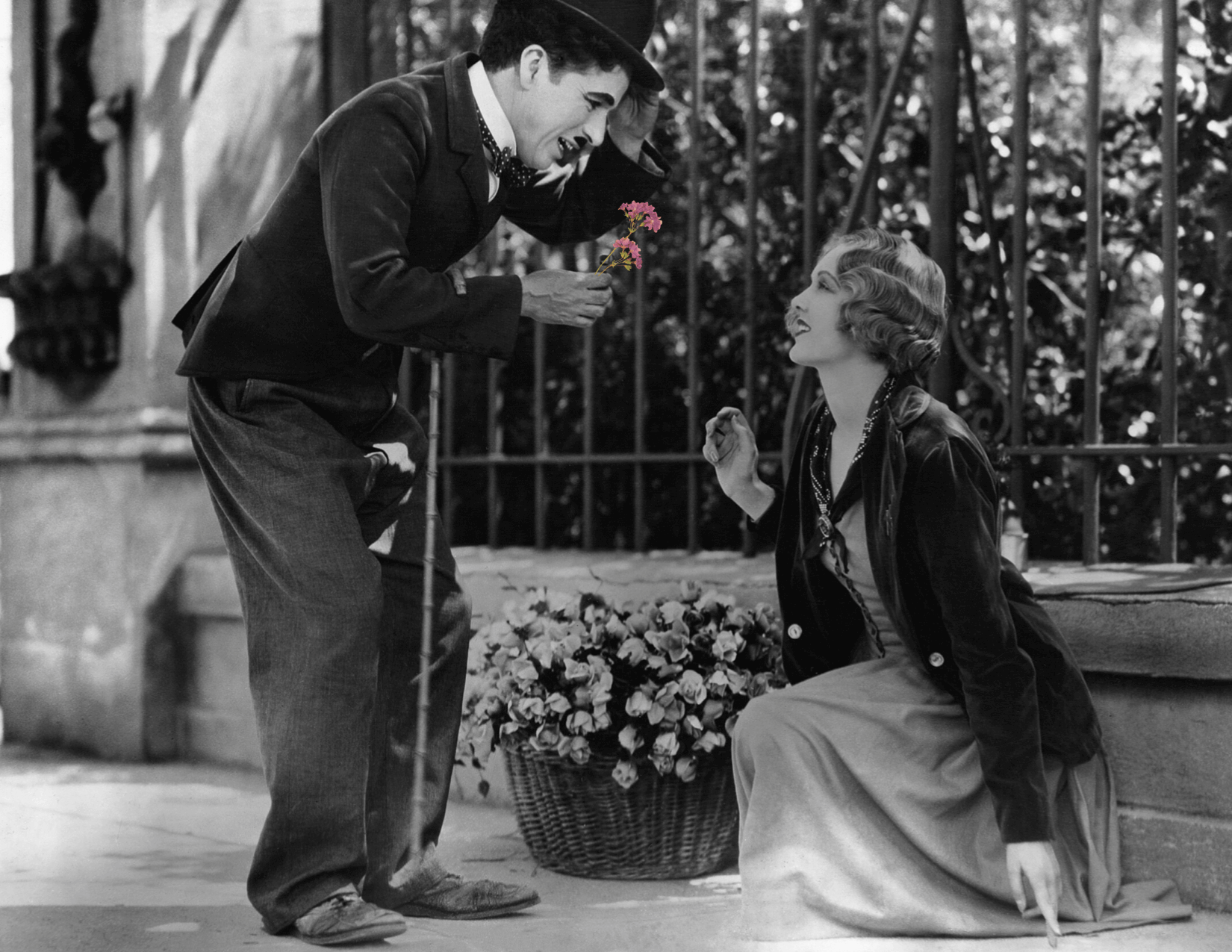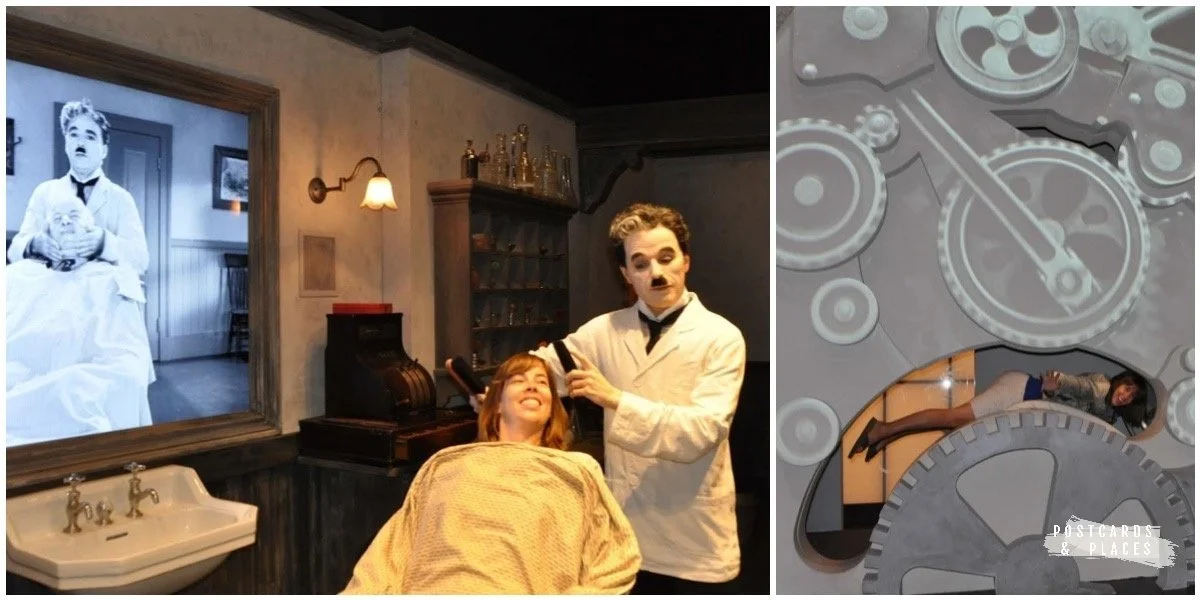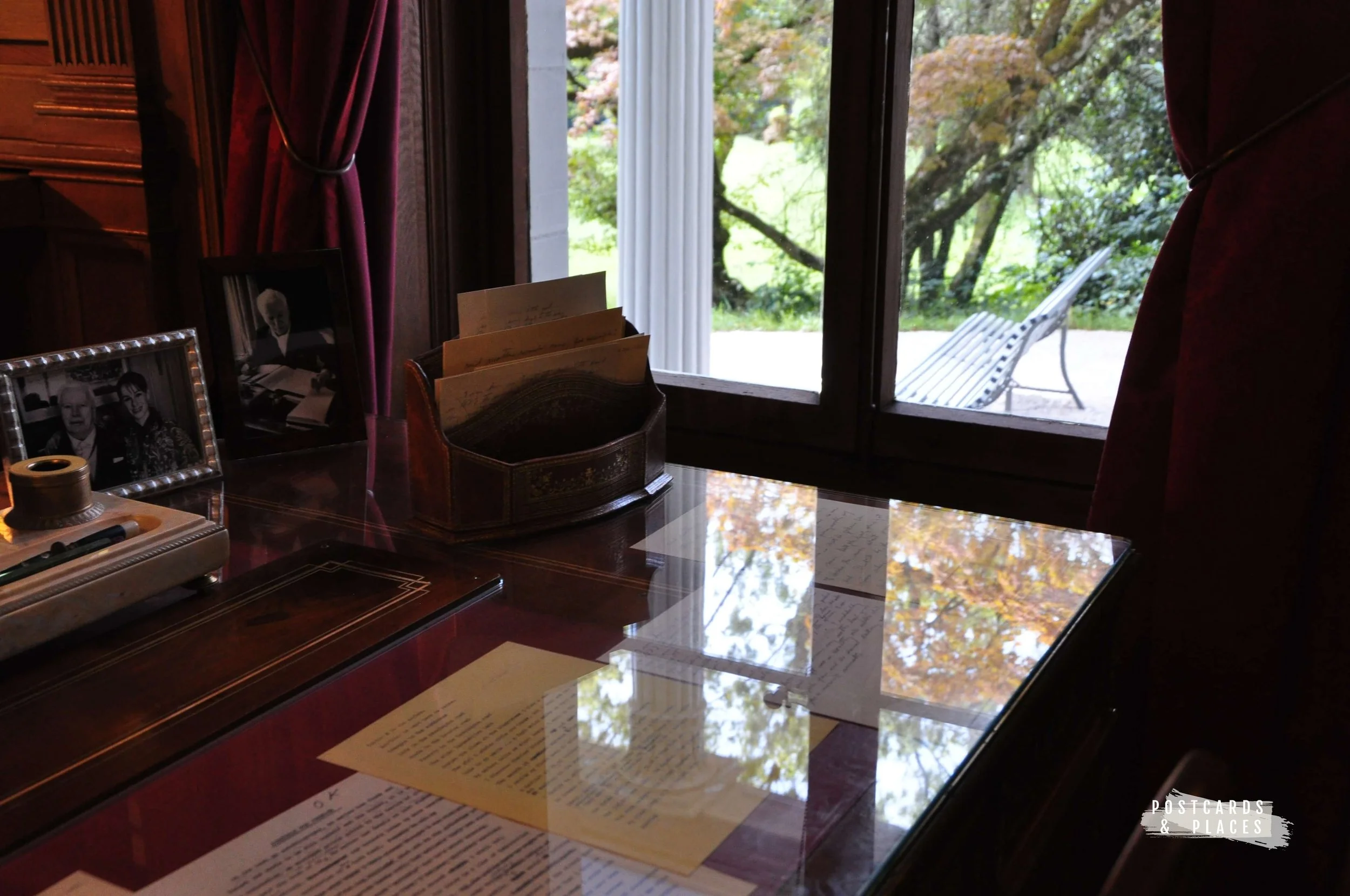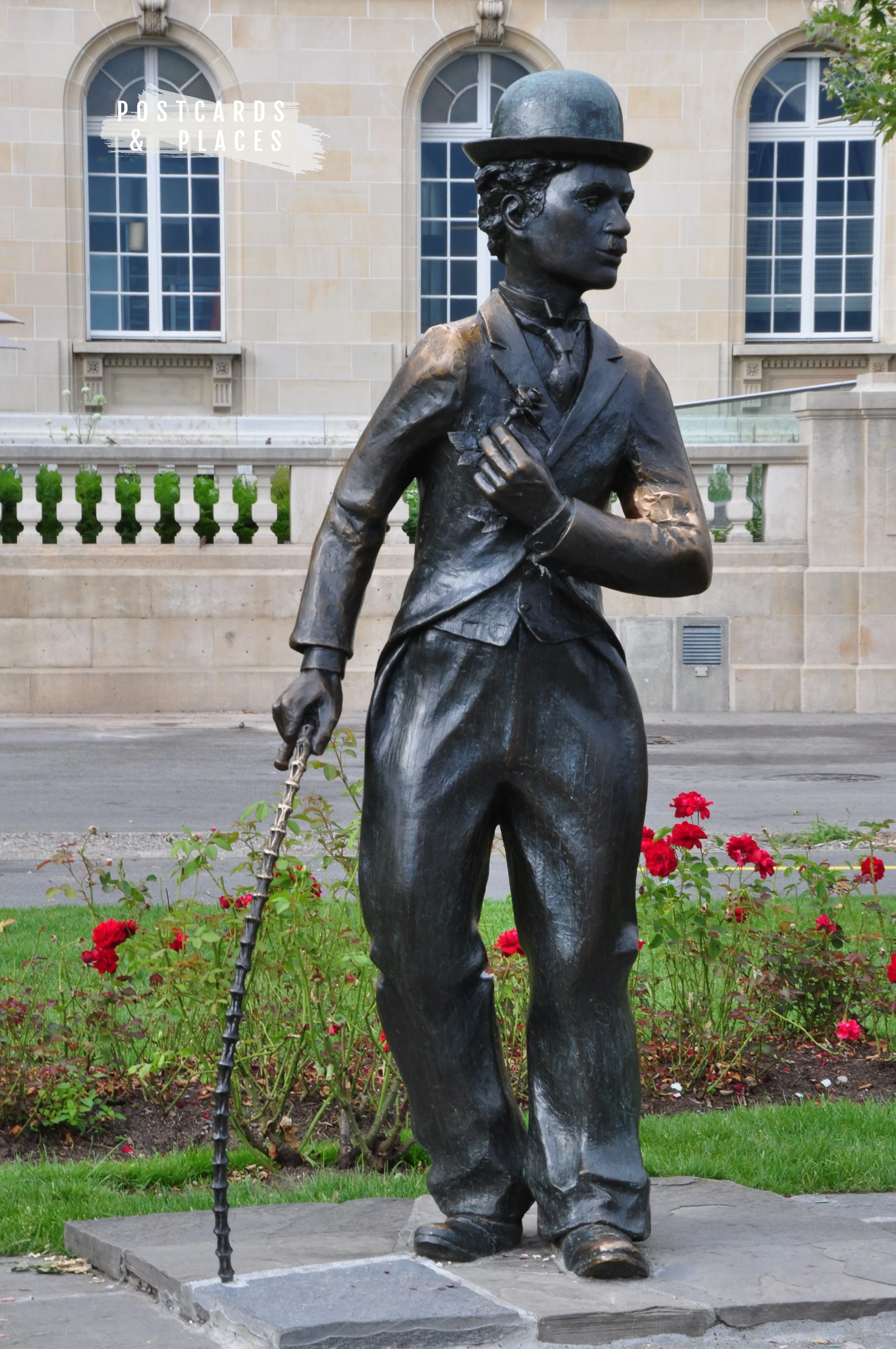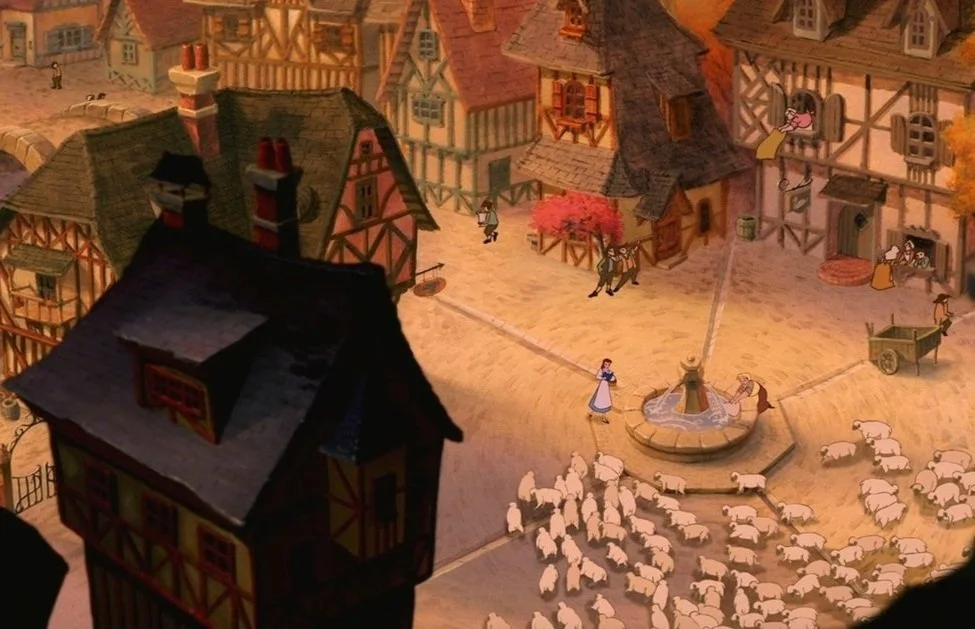“If only one of Charles Chaplin’s films could be preserved, “City Lights” (1931) would come the closest to representing all the different notes of his genius. It contains the slapstick, the pathos, the pantomime, the effortless physical coordination, the melodrama, the bawdiness, the grace, and, of course, the Little Tramp——the character said, at one time, to be the most famous image on earth.”
As any Charlie Chaplin fan should, I visited Chaplin’s World in Vevey. Vevey is located on the northeastern shore of Lake Geneva in Switzerland. As with much of the rest of the country, the area is surrounded by rugged mountains and gorgeous views.
Vevey, Switzerland
Full name: Corsier-sur-Vevey
Population: 19 750
Location: On the north shore of Lake Geneva, near Lausanne
Language: French
Known for: Charlie Chaplin, Nestlé headquarters, a giant fork
Charlie Chaplin moved to the picturesque city in the early 1950s, after he had been exiled from the United States. In fact, he had been sailing from New York City to London for the premiere of his film Limelight when he learned that his American entry permit had been revoked. Whether he chose the country because of its lenient taxes, peace and quiet, or reputation for meticulousness (the latter of which he shared), he decided to move to Switzerland with his family and never returned to the USA.
I followed Chaplin there while touring Switzerland during a solo European vacation. Years earlier, a local cinematheque in Vancouver presented a touring retrospective of Chaplin's films, including masterpieces like City Lights, Modern Times, and The Great Dictator. After watching several of them over those three weeks—but especially after City Lights, which is the personal favourite of both Charlie and me—it was easy to understand why Chaplin is considered to be a Hollywood icon and the greatest comic actor of the silent cinema era.
Located in his 37-acre Swiss estate, Manoir de Ban, Chaplin’s World is a museum dedicated to the movie star and the man. Chaplin purchased the house in December 1952 and it became the home he shared with his last wife, Oona O’Neill, and their eight children for the final 25 years of his life. In a letter to American playwright Clifford Odets, written after moving in, Chaplin described life in Switzerland as “like just being out of prison” and Manoir de Ban as “really the ideal country home.” Chaplin’s World opened nearly 40 years after his death in 1977, but just a few months before I visited.
The exterior of Manoir de Ban at Chaplin’s World in Vevey, Switzerland
Chaplin’s World
I got there by bus. I had taken a morning train from Bern, and at Vevey Station I caught the 212 bus for the 15-minute ride. The bus was full of mostly older fans, perhaps in the 50-80 year old range, plus some kids with their parents. We were all excited to visit the museum; I loved the vibe.
The museum experience starts with a film, about 10-minutes long, that highlights his life and career. Chaplin was born in April of 1889 in London, England to a mother and father who were both music hall entertainers. His parents separated just a couple years later, and his childhood was filled with poverty and hardship. His father was an alcoholic and his mother developed a psychosis while Chaplin was still a young boy. As a teen, Chaplin left school to act. His work alternated between successes and failures until he started working for Keystone Films in the 1910s.
By 1914, he had developed his “Tramp” character and started directing his own short films. The next year, Chaplin moved to the Essanay Film Manufacturing Company and became a cultural phenomenon. In 1917, Chaplin signed with First National Exhibitors' Circuit to make eight films for $1 million. He built his own studio off Sunset Boulevard and was given complete freedom over the making of his pictures. Then, in the 1920s as an independent producer, he started creating the masterpieces that most audiences are familiar with today, starting with The Gold Rush in 1925.
After the introductory film, the screen rose and the audience entered the exhibits by walking underneath it. With that, I felt like I really was entering into Chaplin’s world of cinema.
Goofing around in Chaplin’s World
I walked through a series of sound-stage-like rooms that told this story of his remarkable career. The studio has a collection of wax figures and props that allows visitors like myself to act out memorable scenes. Luckily, other visitors were very willing to help a solo traveller out and took photos for me.
The museum is well-organized and charmingly on-brand. Instead of regular arrows or “go this way” signs, for example, this museum uses images of Chaplin with a cane that points in the direction visitors are supposed to go. Or, opposite a staircase is a video clip of Chaplin walking down an up escalator. I loved the details.
Chaplin was an actor, writer, director, composer in so many of his films—his perfectionism and meticulousness drove him to have a say in all aspects of his productions. City Lights, for example, took 21 months to film; a placard at the museum says that the flower stand sequence, where the Tramp meets the blind girl for the first time, required an incredible 450 takes. This museum seems to have been created as he would have: personal, interactive, and with an attention to detail.
While studio section is dedicated to his films, the manoir section is dedicated to his life and family. In family videos, he seems just as goofy as his on-screen character; he reminded me of my dad.
Wax statues of Charlie and his wife Oona watching home movies, at Chaplin’s World
The manor’s library, sitting room, and dining room, the museum says, are decorated as they were in the 1970s when the Chaplin family lived there. Most of the furniture is original, though some pieces are reproductions or replacements that are similar to the original decor. The manor has a large collection of letters and photos and lifelike wax figures of Chaplin and his famous friends. More than a museum, visitors can actually interact with the furniture and many of the items on display.
Chaplin the man was a complex character, and his life was peppered with controversies; he had more than one marriage with a too-young costar, for example. Chaplin’s World doesn’t shy away from these stories. In the library, newspaper clippings cover the walls and visitors can read about his improper love affairs and accusations of tax evasion.
Chaplin created Modern Times during the Great Depression as a “satire on certain phases of our industrial life.” He created The Great Dictator because “Hitler must be laughed at,” he wrote. The ending of that film, where he makes a 5-minute to-the-camera speech against war and fascism, was unpopular when the film was first released, though it was better received when he was asked to repeat it at American President Franklin D. Roosevelt’s January 1941 inauguration. Shortly after this, he popularity quickly declined; he was accused of being a communist sympathizer, despite his latest film; he was hit with a paternity scandal; and his 1943 marriage to 18-year-old Oona was not well received.
Despite his perfection-induced stress and list of political and personal controversies, it appears as though Chaplin lived a very happy life in Vevey with his wife, whom he described as his “perfect love,” and their children.
Because of the clips of his films playing constantly all around, laughter—from chuckles to all-out belly laughs—was everywhere. The excitement that started on the bus ride there didn’t stop.
Details: Chaplin’s World is open daily, other than New Years and two weeks mid-January. Hours vary, but the museum is usually open from 10h to 17h or18h. Tickets range from 29 Swiss francs for adults to free for children under 6, though other offers are often available. The café is accessible for everyone, not just museum-goers.
It’s easy to get there via the train and bus. From Vevey Station, take bus 212 (which runs every 20 minutes) to the “Chaplin” stop. If driving, take the Vevey exit off highway A9, and drive to Route de Fenil 2; 200 parking spaces are available for a fee.
Chaplin elsewhere in vevey
Chaplin was clearly a beloved member of the community; signs of him are everywhere.
Statue of Charlie Chaplin in Vevey, Switzerland
Chaplin died on Christmas Day in 1977 at the age of 88; he is buried in a small graveyard, and his grave at Cimetière de Corsier-sur-Vevey attracts visitors seeking to remember him. (Interesting fact: his family buried his body in a concrete grave to prevent theft attempts.)
The statue of Chaplin as the Tramp at Lake Geneva is another highlight. It stands at Square Charlie Chaplin, on the lakefront promenade, Quai Perdonnet, where he would walk with his wife Oona. It was created by British sculptor John Doubeday.
Fans can also stay at the Modern Times Hotel, which has film clips playing in the lobby and portraits of Chaplin throughout the bar and guest rooms.
Two 14-storey towers on Avenue de Gilamont have large-scale murals of Charlie Chaplin. The black and white buildings have several black and white portraits and stills from his movies, like Modern Times and The Gold Rush.
Finally, it’s worth taking a break in Parc Charlie Chaplin, which is also accessible by bus 212 en route to Charlie’s World.
What’s your favourite Charlie Chaplin film? Let me know in the comments below!
Thank you for showing your support through likes, comments, and social shares! If you really enjoyed this post and would like to further support my work, you can Buy Me a Drink.
